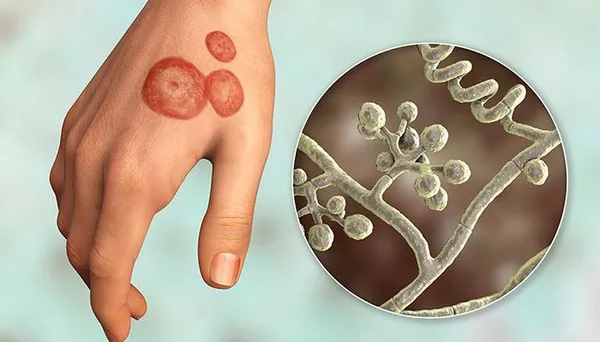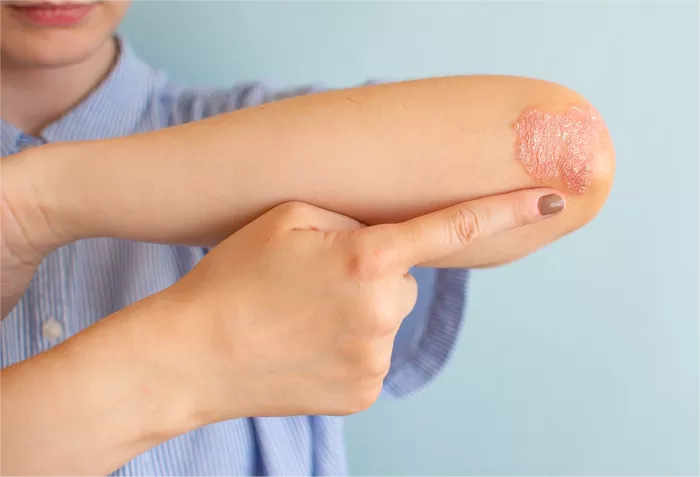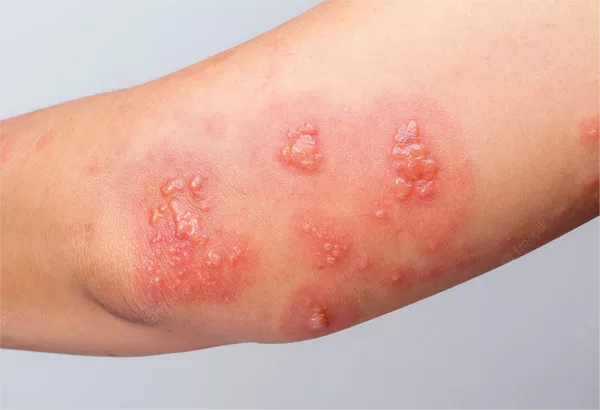Ringworm, despite its misleading name, is not caused by a worm but rather by a fungus. This fungal infection, known scientifically as dermatophytosis, commonly affects the skin, scalp, and nails. While ringworm is typically not life-threatening, there are concerns about its potential to lead to more serious complications, including sepsis—a severe and potentially life-threatening condition. In this article, we delve into the relationship between ringworm and sepsis, exploring the mechanisms, risk factors, and preventative measures associated with these conditions.
Understanding Ringworm
To begin with, it’s essential to understand what ringworm is and how it manifests. Ringworm is caused by various species of fungi called dermatophytes, which thrive on dead tissues of the skin, hair, and nails. Contrary to its name, ringworm does not involve worms at all. Instead, it typically appears as a red, scaly rash in a ring-like shape on the skin, which is where the name originates.
Ringworm is highly contagious and can spread through direct skin-to-skin contact with an infected individual or by touching contaminated items such as towels, clothing, or grooming tools. The infection commonly affects areas like the scalp (tinea capitis), body (tinea corporis), groin (tinea cruris or jock itch), feet (tinea pedis or athlete’s foot), and nails (tinea unguium).
Can Ringworm Lead to Sepsis?
The link between ringworm and sepsis is an important consideration, especially for individuals with compromised immune systems or other health conditions. Sepsis is a systemic inflammatory response to an infection that can lead to tissue damage, organ failure, and death if not promptly treated. While ringworm typically affects only the skin’s outer layers, severe cases or certain predisposing factors can potentially lead to complications such as secondary bacterial infections.
In individuals with weakened immune systems, extensive or untreated ringworm infections can allow bacteria to invade deeper tissues. This invasion can cause cellulitis—a bacterial skin infection that can spread rapidly and, in severe cases, lead to sepsis. The risk of sepsis from ringworm is relatively low in healthy individuals with intact immune responses, but it becomes a more significant concern in vulnerable populations.
Risk Factors and Vulnerable Populations
Several risk factors increase the likelihood of developing severe ringworm infections that could potentially lead to sepsis:
1. Immunocompromised Conditions: Individuals with weakened immune systems due to conditions like HIV/AIDS, diabetes, cancer, or organ transplantation are more susceptible to developing severe ringworm infections and subsequent complications.
2. Extensive or Chronic Infections: Prolonged or widespread ringworm infections that remain untreated can create openings for secondary bacterial infections, increasing the risk of sepsis.
3. Advanced Age: Older adults, especially those with other health issues, may be more prone to developing complications from ringworm due to age-related immune system changes.
4. Poor Hygiene or Living Conditions: Inadequate hygiene practices, crowded living conditions, or sharing personal items can facilitate the spread of ringworm and increase the risk of complications.
Preventative Measures
Preventing ringworm and its potential complications, including sepsis, primarily involves practicing good hygiene and taking prompt action when infections occur:
1. Maintain Good Hygiene: Wash hands regularly, especially after touching animals or potentially contaminated surfaces. Keep skin clean and dry, and avoid sharing personal items like towels, clothing, or hairbrushes.
2. Prompt Treatment: Seek medical attention for suspected ringworm infections, especially if symptoms persist or worsen. Early treatment can prevent the infection from spreading and reduce the risk of complications.
3. Manage Underlying Health Conditions: Individuals with compromised immune systems should work closely with healthcare providers to manage their conditions and reduce the risk of infections.
4. Educate and Raise Awareness: Educate communities, schools, and healthcare providers about ringworm transmission and prevention measures to reduce the incidence of infections and their complications.
Conclusion
While ringworm itself is a common and usually manageable fungal infection, it can pose a risk of more serious complications like sepsis under certain circumstances. Understanding the risk factors and taking appropriate preventative measures are crucial steps in reducing the likelihood of severe outcomes associated with ringworm infections, particularly in vulnerable populations. By promoting good hygiene practices, early detection, and timely treatment, we can mitigate the potential for ringworm-related complications and improve overall public health outcomes.
In summary, while ringworm does not typically cause sepsis in healthy individuals, it can lead to serious systemic complications in certain vulnerable populations. This underscores the importance of prompt diagnosis, appropriate treatment, and preventive measures to reduce the risk of severe outcomes associated with ringworm infections.
Related Topics:
























